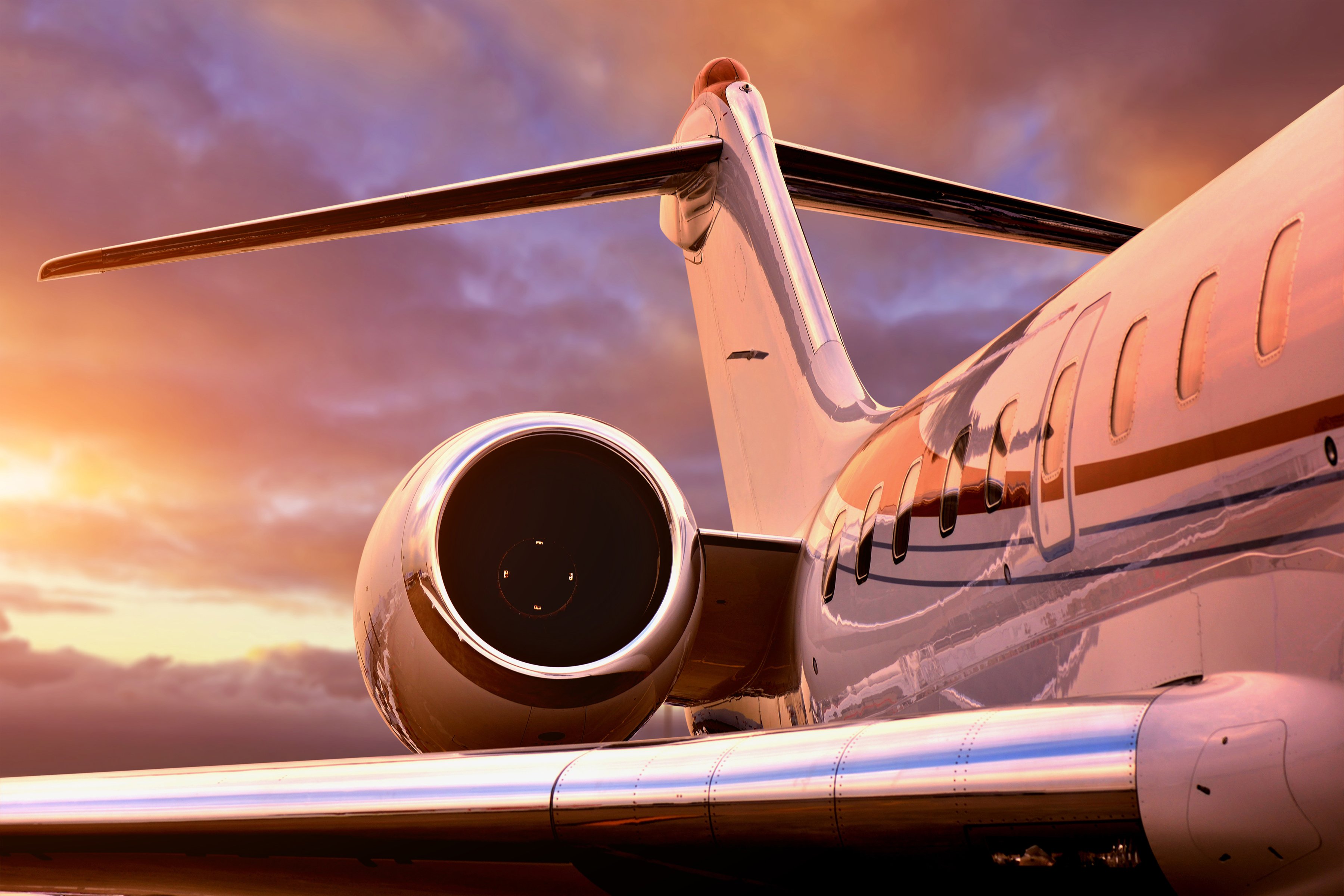Every flight is different. By booking flights individually you can realize the best deals. But what plane is best for what journey? This aircraft for charter guide explains different types of aircraft and the best value options to consider.
Every Flight is Different. And So Is Every Aircraft.
Let’s start with the basics. Every aircraft for charter is a different size and can be configured to a set number of seats. It will have a specific range and speed, along with a standard set of amenities. While this all sounds pretty obvious it is amazing how quickly such things are overlooked.
Would you book a 16-seater minivan for an airport transfer for two passengers? Would you spend thousands more on a gas guzzling 5.0L V8 supercharged Range Rover just to run some errands in the city? When booking a taxi or renting a car you think about the number of passengers and the distance you have to cover; then you order accordingly. Even when you demand a certain suave from a road vehicle there is always a balance between speed, distance, amenities, size, and cost.
With road vehicles there is a little more wiggle room as their costs are not as high. But when it comes to aircraft at USD 2500 plus per hour, over the top tastes come at a serious price.
How to Book the Best Value Private Air Charters
To get the best value air charter you should book an aircraft that meets your needs, but doesn’t exceed them. Just like the scenario of a 16-seater minivan for two passengers, it is a waste of money to charter a 16-seater aircraft for two passengers. Likewise, a light jet is always going to provide the best value for six passengers on a 300-mile business route, over a heavier or larger jet.
What is best for one flight is different from what is best for your next flight. The easiest way to reduce air charter costs is to book aircraft for charter on an individual basis. This way you will never pay more than what you actually need. Note that private jet card memberships tie customers into specific type of aircraft, as does a fractional jet ownership. Plus, such schemes require significant financial investment. Book flights on an individual basis and you can fly as you go, something that makes aircraft charter possible for almost everyone.
Aircraft for Charter Guide: What Is Best For Your Flight
Selecting the best aircraft for charter does not require a private jet broker. Once you have a grasp on the basics you will know what to consider for each flight. Don’t worry too much about the individual details, such as a Cessna Mustang versus an Embraer Phenom 100. On Airvel’s booking engine you can compare aircraft side by side, so it is easy to make an informed decision. By understanding the different types of aircraft for charter you will know what will likely offer the best value for your individual flights.
Turboprops
Powered by turbine propeller engines, turboprops are extremely fuel efficient at low speeds and low altitudes. They have a lower thrust compared to jets, meaning they fly slower and lower. Longer flights will take significantly longer in a turboprop, yet the difference is negligible when you only fly a few hundred miles. Another turboprop advantage is the ability to land on short or dirt runways.
Most turboprops can carry 4 – 9 passengers, with 6 – 8 seats the typical configuration. They do come in different sizes and this usually relates to their range. For example, a Beechcraft King Air 100 and King Air Charter 350 can carry a similar number of passengers (8 vs 9), yet the 350 can cruise higher, fly longer, and has a larger payload.
Consider a turboprop aircraft for charter for:
- Flights of under or around 500 nautical miles
- Charters when there are less nine passengers
- Flying to remote airports with small runways
- Short popular air charter routes, such as Los Angeles to Las Vegas or Teterboro to Dulles
King Air dominate the turboprop market and you can read more about King Air charters here. Prices are usually USD 1400 – 2200 per flying hour dependent on aircraft size.
Very Light Jets and Light Jets
Jet engines work on a completely different principle to turboprops. They can fly higher and faster, with more weight, and they consume more fuel in the process. Very light jets are not popular aircraft for charter, mostly due to the cost benefits of turboprops. Flown by a single pilot, these can still be a consideration for flying short distances with limited cargo and passengers. An Embraer Phenom 100 is a good example.
Light jets can typically cruise at around 440 mph and have a range of around 1500 miles. They still have the flexibility to land on short airstrips and minor airports. Essentially the technology is just like a large commercial jet, just on a much smaller scale. Light jets are the aircraft best suited for most business jet charters, as they provide speed and value for a small number of passengers (usually 4 – 8). They can provide excellent value due to their abundance in the air charter market. More aircraft means more choice and a plane that is situated close to you.
Light jets are good for:
- Charters with less than nine passengers
- Flights of around 1000 nautical miles or less
- Popular business routes (usually there are many light jets based at popular airport FBOs)
Representative aircraft include the Learjet 35, Beachjet 400, Citation II, Phenom 300 and Falcon 10. Price per flying hour car vary from USD 2000 – 3200. The good news is that there is very good chance a light jet will be based at your point of departure, so there should not be no repositioning fees.
Mid-Sized Jets
These aircraft for charter are a more powerful version of light jets. They can carry more weight and have a longer range, with some mid-sized jets cruising non-stop for over 2000 miles. A heavier aircraft eats more fuel so you will be paying more. Note that most mid-sized jets have a similar passenger capacity (5 – 9), although some can be configured to take more passengers. Ultimately they provide more room and comfort on long journeys. For this reason they are a good choice for a large number of reasons.
- Air charters for flights of 1000 – 2000 miles
- When you need the space to move around in the plane
- Having boardroom style seating for a business flight
- Carrying excessive cargo or luggage
- Operating out of both small and large-sized airports
The Citation XLS has become something of a standard bearer for mid-sized jets, although it faces tough competition from the Gulfstream 150. The Citation VII and Learjet 55 are a little cheaper as mid-sized aircraft for charter. Prices overlap with light jets and the best value jet will be one that is already based at your point of departure. Expect it to cost USD 3000 – 3600 per flying hour.
Heavy Jets
Heavy jets answer the call when you need to fly further or fly with more passengers. These are premium charter aircraft for long-range flights of up to 4000 miles, such as on transatlantic and coast to coast journeys. Cruising speed is up to 530 mph but note that heavy jets can’t land at the smallest airports, or on airstrips that are not clean asphalt. Still, heavy jets can operate from bases that are inaccessible to commercial airlines.
Typical passenger capacity is 10 – 19 although this can be higher with club style seating. There are many potential cabin configurations, including aircraft with beds and boardroom seating. This makes them a choice for both personal and business flights. Ultimately, a heavy jet will be the aircraft you charter when flying long or carrying more passengers.
- Flights of 2000 – 4000 miles
- Flights when you have 10 – 19 passengers
- Charters that demand enhanced comfort or a specific cabin configuration
Gulfstream’s range of heavy jets dominate this market, with the Gulfstream II, III, IV and V. Others include the Falcon 2000 and Challenger 605. There is a significant price jump between mid-sized and heavy jets. USD 5000 per flying hour is common.
Jet Airliners
Jet airliners may initially seem out of place on an aircraft for charter guide. Are Airbus 300s and Boeing 747s not just for commercial flights? These aircraft can seem expensive but are good value when you have the right number of passengers. They are the same jets used on commercial flights, with a capacity of anywhere from 25 to above 500. When you need to move a high volume of passengers there is a surprising number of jet airliners for charter. Their increased range may also be essential should you want to fly more than 4000 miles.
Aircraft for Charter: Guide to Minimizing Cost
Okay, so you book an aircraft for charter on a flight by flight basis. You choose what is best for each individual flight. That is step one. Now consider step two.
Choose aircraft that are already based at your point of departure. This way there are no repositioning fees. This is easy from any of the most popular private jet airports. But sometimes you need to fly from remote places, so it pays to be very flexible about the FAA Part 135 operators you use. After all, it doesn’t make sense to be tied into a Florida-based operator when you need to fly from Boston or Los Angeles.
Finally, think competition. You will get the best value charter by selecting from the widest possible choice of aircraft. When there are two operators the prices can be manipulated. When you have access to over 4000 aircraft competition helps bring the cost down. Furthermore, it is more likely that an aircraft can meet your very specific needs.
Airvel is the world’s leading booking engine for private air charters.




Comment